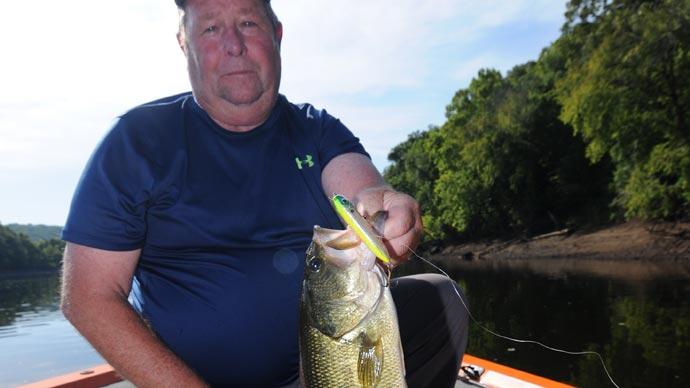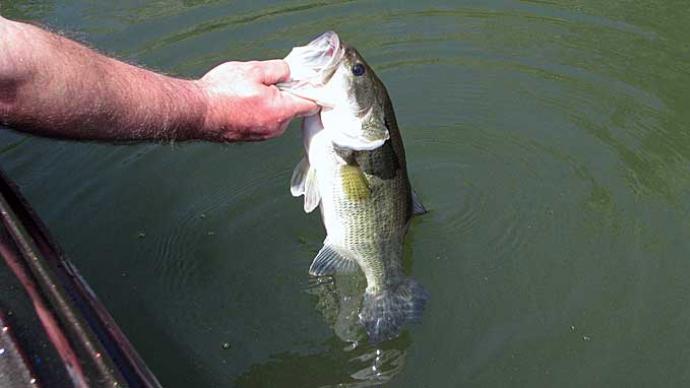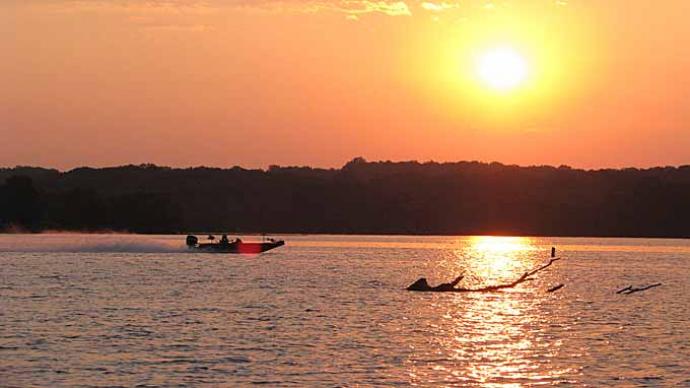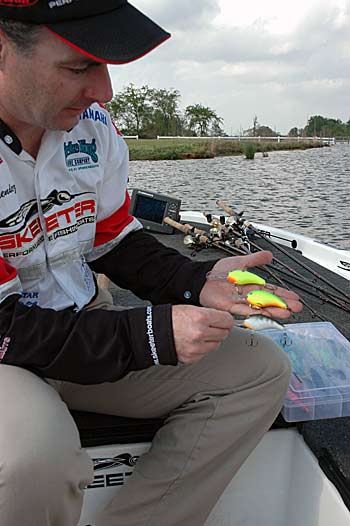
The Webster's Dictionary defines dog days as 1) the period between early July and early September when the hot sultry weather of summer usually occurs in the northern hemisphere; 2) a period of stagnation or inactivity.
Some believe that “period of stagnation or inactivity” definitely applies to bass fishing, but pro anglers know there are still plenty of active bass to be caught then—and some of those fish can be found in three types of structure.
Here are three spots pro anglers look for active bass during the dog days of summer.
Ledges
Many bass leave the bank for the wide-open spaces of the lake during the summer. Finding them was easy when the fish were close to shore, but now it has become more of a challenge.
While the novice angler continues to pound the shoreline and catch small bass, Kentucky pro Mark Menendez targets offshore structure that produces for him throughout the dog days of summer. Menendez locates dog days bass along ledges, a structure with many of the same features (laydowns, stump rows, brush, and rock piles) anglers find along the bank.
Similar to steps in a swimming pool, ledges serve as stairways for bass. "A ledge is just a shallow area with immediate deep water access that provides a congregation point and a feeding area," says Menendez.
While some anglers can trick ledge bass with shallow-water tactics, Menendez relies on two techniques for probing the drops. His favorite methods for catching bass along ledges are cranking a deep-diving crankbait and stroking a jig.
Deep cranking can produce a limit in a hurry, so Menendez prepares for this quick action by having five rods with crankbaits ready on the front deck. "Once you find the sweet spot, you're ready to start catching them on every throw," says Menendez, who frequently takes five bass on five casts.
As the sun gets higher and the fish become less aggressive, Menendez switches to the jig stroking technique. "The stroking aspect of ledge fishing is getting a reaction strike from relatively deep-water fish (in the 10- to 20-foot range)," advises Menendez. This technique involves jerking a jig along the top of the ledge to the drop.
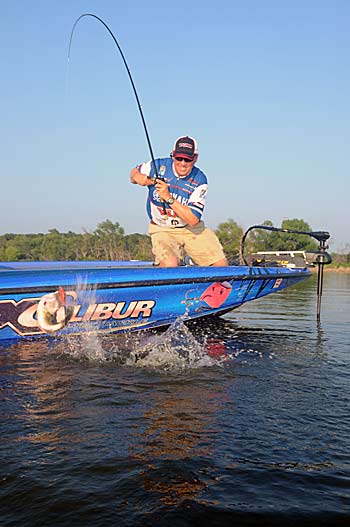
Humps
Major League Fishing pro Alton Jones considers humps any irregular bottom feature that gives bass a place to rely on its predatory instincts. "Bass are the classic predators," he says. "They like to sit in a spot that gives them a definite advantage over whatever they try to eat. A hump certainly does that." Jones notes that humps also have deep-water access nearby, allowing the fish to quickly escape when necessary.
"Some humps are better than others," says Jones. "The best humps are always located near some sort of underwater pathway like a creek channel or a weed line--something that the bass can follow from shallow to deep water.”
In the feeder creeks of reservoirs, Jones looks for high spots in the channel where the bottom rises from 15 feet to 8 feet deep. “That’s going to be one of those places where you might pull up and find giant schools of bass,” he says.
Some humps produce bass year-round, but Jones usually keys on this structure from the post-spawn through the dog days of summer into fall.
Jones first probes a hump with a subtle presentation, so he starts with a crankbait and follows up with a Carolina rig. "The big fish are going to be the spookiest, so if I start throwing my Carolina rig out there, the first fish I am going to spook off is that giant," says Jones.
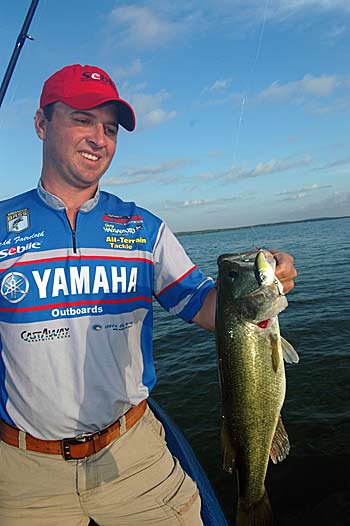
Flats
"Many times during the dog days of summer, the deep bite will get kind of finicky, especially in August and September," says Major League Fishing pro Todd Faircloth. “So then I can go to the very backs of creeks and target laydown logs and stumps and get on a pretty strong pattern.”
The Texas pro relies on a square-bill crankbait to catch bass 1 to 4 feet deep around shallow wood cover along the flats in the stained water of major creeks. A big log on a flat can be an excellent replenishing spot for dog days bass. “You can just go back and forth on it three or four times throughout the day and catch fish off it every time," Faircloth says.
The Texas pro casts his crankbait to the far end of a log and employs a high-speed baitcast reel with 17-pound line to burn the lure the entire length of the cover. He tries to bang the crankbait into limbs and keeps cranking after it deflects off the obstacle. "When it hits something and flares off to the left or right is usually when you trigger the bite," says Faircloth.
The tournament veteran believes this tactic is effective because it presents a different look to the fish, which are accustomed to seeing jigs or worms flipped into the wood cover rather than a crankbait banging around in the limbs. He thinks the crankbait also best mimics a large shad or bluegill, the primary forage of bass hanging around the shallow wood of flats at that time.
You can get additional tips like these from the author's book, "101 Bass Fishing Tips, Twenty-First Century Bassing Tactics, and Techniques from All the Top Pros." Order an autographed copy by visiting https://jnoutdoors1.jnoutdoors.com.


